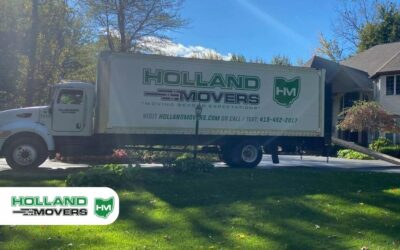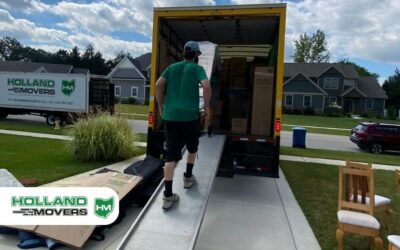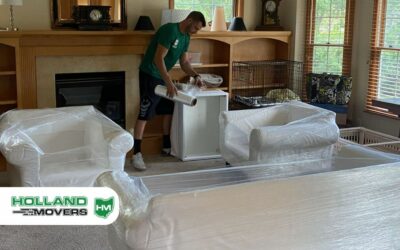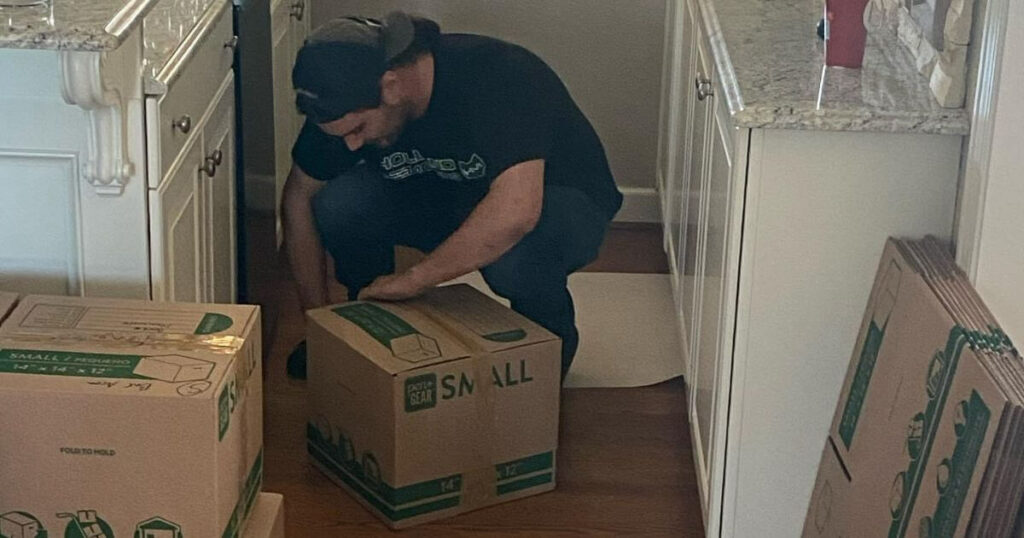
Moving to a new home can be an exciting adventure, but it also comes with its fair share of challenges. One of the most critical aspects of a successful move is ensuring that your belongings, especially fragile and valuable items, are properly wrapped and packed for safe transport. In this comprehensive guide, we’ll walk you through the essential supplies, techniques, and tips you need to know to protect your possessions during the moving process. Holland Movers specializes in moving, providing expert services to ensure that your move is handled with care and efficiency.
Wrapping and Packing Items When Moving
Proper wrapping and packing are key to a stress-free move. By taking the time to carefully prepare your items for transport, you can minimize the risk of damage and ensure that your belongings arrive at your new home in the same condition they left. In this article, we’ll cover everything from choosing the right packing supplies to step-by-step wrapping instructions for various items, as well as helpful tips for packing specific rooms and hiring professional movers.
Essential Packing Supplies
Before you start wrapping and packing your items, it’s essential to gather the right supplies. Having the proper materials on hand will make the process more efficient and effective, ensuring that your belongings are well-protected during the move.
Packing Paper
Packing paper is a versatile and essential supply for wrapping and cushioning your items. It offers several advantages over other materials:
- Non-abrasive: Packing paper is gentle on delicate surfaces and won’t cause scratches or damage.
- Hygienic: Unlike newspaper, packing paper is clean and ink-free, so it won’t stain your items.
- Durable: High-quality packing paper is strong and tear-resistant, providing reliable protection.
- Space-saving: Packing paper is thin and compact, allowing you to maximize space in your boxes.
- Cost-effective: Compared to other materials, packing paper is an affordable choice for wrapping your belongings.
Use packing paper to wrap individual items, line boxes, and fill empty spaces to prevent shifting during transport.
Bubble Wrap
Bubble wrap is another indispensable packing supply, particularly for fragile items that need extra protection. Its air-filled bubbles create a cushioning barrier around your belongings, absorbing shocks and preventing damage. To use bubble wrap effectively:
- Wrap items with the bubble side facing inward for maximum protection.
- Use enough bubble wrap to cover the entire item, securing it with packing tape.
- For extremely delicate items, use multiple layers of bubble wrap or combine it with packing paper for added cushioning.
Other Useful Supplies
In addition to packing paper and bubble wrap, there are several other supplies you’ll want to have on hand:
- Packing tape: Choose a high-quality, sturdy packing tape to seal your boxes securely.
- Scissors or utility knife: You’ll need these tools to cut packing paper, bubble wrap, and tape.
- Markers: Use permanent markers to label your boxes clearly with their contents and destination room.
- Specialty boxes: Consider investing in wardrobe boxes for hanging clothes, art boxes for framed pieces, and bankers boxes for files and documents.
- Foam pouches: These are great for protecting dishes, glasses, and other fragile items.
- Moving blankets: Use these to wrap and cushion furniture and large items.
- Plastic stretch wrap: This material is helpful for securing moving blankets and protecting items from moisture and dust.
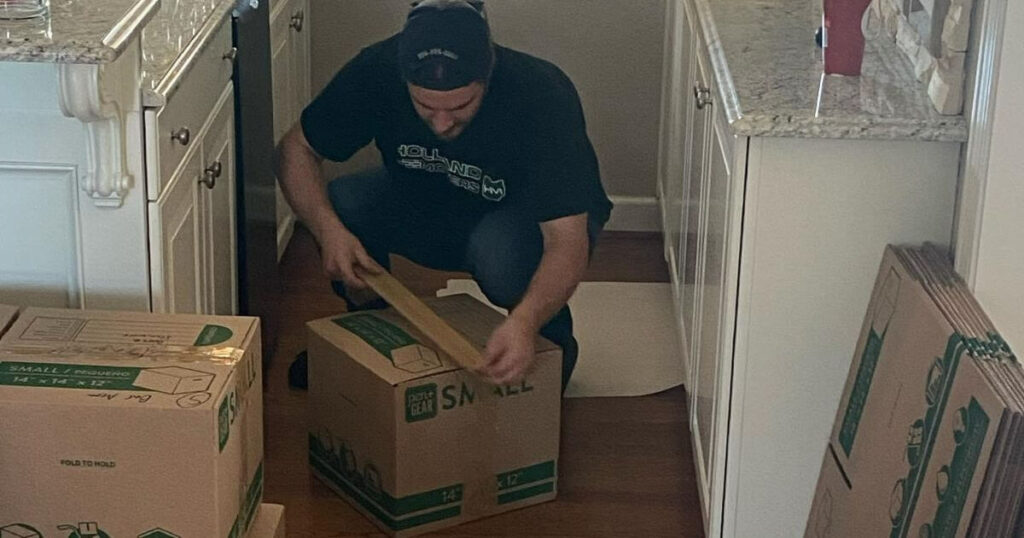
Preparing Items for Wrapping
Before you start wrapping your belongings, it’s important to take some preliminary steps to ensure a smooth and organized packing process.
- Create an inventory list of your belongings, especially valuable or sentimental items. This will help you keep track of your possessions and ensure that nothing gets lost during the move.
- Take photos of your valuable items, such as artwork, antiques, or electronics. These photos will serve as a visual record of their condition before the move and can be useful for insurance purposes if any damage occurs.
- Clean and dust your items before wrapping them. This will help protect them from dirt and debris during the move and make unpacking a more pleasant experience.
- Disassemble furniture and remove loose parts, such as drawers, legs, and hardware. Keep these parts together and label them clearly to make reassembly easier.
- Group similar items together, such as dishes, books, or clothing. This will make packing more efficient and help you stay organized.
Wrapping Techniques for Various Items
Now that you have your supplies and have prepared your items, it’s time to start wrapping. Here are some specific techniques for wrapping common household items:
Dishes and Glassware
- Wrap each piece individually in packing paper, using multiple sheets if necessary for fragile items.
- Place a layer of crumpled packing paper or bubble wrap at the bottom of the box for added cushioning.
- Pack plates vertically, like a stack of records, with a layer of packing paper or bubble wrap between each plate.
- Use dividers or cell boxes to keep glasses and stemware separate and secure.
- Fill any empty spaces with crumpled packing paper or bubble wrap to prevent shifting.
Artwork and Mirrors
- For valuable pieces, consider using specialty art boxes or custom crating to ensure maximum protection.
- Wrap each item in bubble wrap, making sure to cover all sides and corners.
- Secure the bubble wrap with packing tape, being careful not to tape directly onto the artwork or mirror surface.
- Place the wrapped item in an appropriately sized box, using additional packing paper or bubble wrap to fill empty spaces.
- Label the box as “Fragile” and indicate which side should be kept upright with “This Side Up” arrows.
Electronics
- If possible, use the original packaging for your electronics, as these boxes are designed to fit and protect the items properly.
- If you don’t have the original packaging, wrap each item in bubble wrap and place it in a box that is slightly larger than the item itself.
- Use packing paper or bubble wrap to fill any empty spaces and prevent the item from shifting inside the box.
- Label cords and take photos of connections before disassembling to make reassembly easier.
- Pack cables and accessories in labeled plastic bags and place them in the same box as the corresponding electronic item.
Furniture
- Disassemble furniture whenever possible, removing legs, drawers, and other detachable parts.
- Wrap each part individually in moving blankets or bubble wrap, securing the wrapping with packing tape or plastic stretch wrap.
- Label each part and keep hardware (screws, bolts, etc.) together in a labeled plastic bag, taping it securely to the corresponding piece of furniture.
- For large or heavy items that cannot be disassembled, use moving blankets and plastic stretch wrap to protect them from scratches and damage during transport.
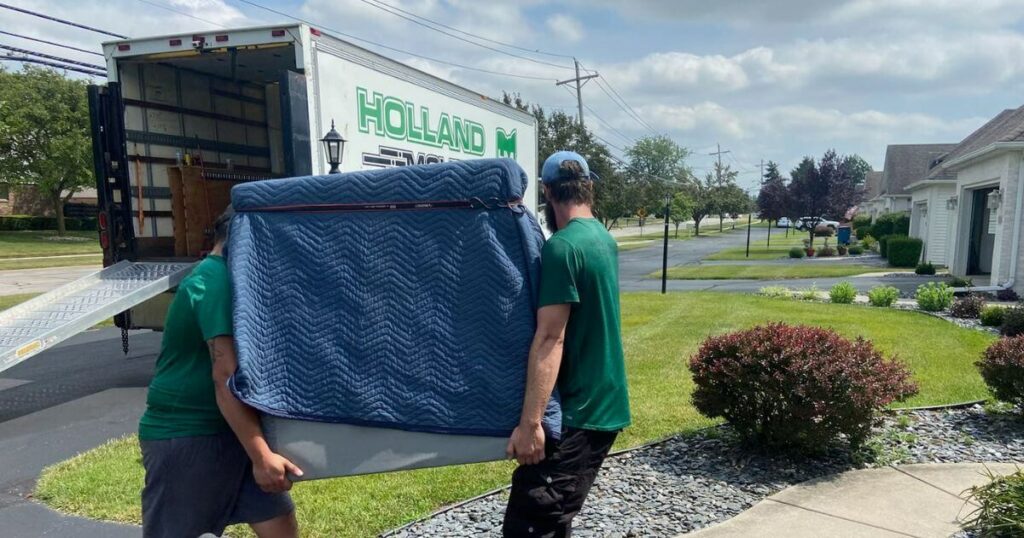
Packing Boxes Effectively
Once your items are wrapped, it’s time to pack them into boxes. Here are some tips for packing boxes efficiently and safely:
- Choose the right size boxes for each item. Avoid using boxes that are too large, as this can lead to items shifting and getting damaged.
- Pack heavier items on the bottom and lighter items on top. This will help keep the box stable and prevent crushing.
- Fill empty spaces with crumpled packing paper or bubble wrap to prevent items from moving around inside the box.
- Avoid mixing items from different rooms in the same box. This will make unpacking easier and more organized.
- Label each box clearly with its contents and the destination room. Use a permanent marker and write on at least two sides of the box.
| Box Size | Ideal Contents |
| Small | Books, DVDs, CDs, small appliances, fragile items |
| Medium | Pots, pans, small electronics, linens, clothing |
| Large | Bedding, pillows, larger appliances, toys |
| Wardrobe | Hanging clothes, coats, dresses, suits |
Special Considerations
Some items require extra care and attention when packing. Here are a few special considerations to keep in mind:
- Sentimental or irreplaceable items: Consider packing these items yourself and transporting them separately from the rest of your belongings. If you must pack them, use extra padding and mark the boxes clearly as “Fragile” and “Handle with Care.”
- Kitchen: Pack heavier items like pots and pans in smaller boxes, and use plenty of padding for fragile items like glassware and dishes. Wrap sharp items like knives securely in packing paper or bubble wrap.
- Bedroom: Pack clothing in wardrobe boxes or suitcases, and use vacuum storage bags for bedding and linens to save space. Disassemble bed frames and wrap each part separately.
- Garage: Drain fuel from lawn mowers and other equipment, and pack tools securely in toolboxes or sturdy boxes. Use moving blankets to wrap and protect large items like bicycles and sports equipment.
- Items movers won’t transport: Some items, such as hazardous materials, perishables, and certain high-value items, may not be suitable for transport by moving companies. Check with your movers ahead of time and make alternative arrangements for these items if necessary.

Hiring Professional Movers
While it’s possible to handle wrapping and packing yourself, hiring professional movers can make the process much easier and less stressful. Here are some benefits of working with experienced movers:
- Expertise: Professional movers have the knowledge and skills to properly wrap and pack your belongings, ensuring their safety during transport.
- Efficiency: Movers can often pack your items more quickly and efficiently than you could on your own, saving you time and effort.
- Supplies: Many moving companies offer packing services that include all necessary supplies, so you don’t have to worry about gathering them yourself.
- Insurance: Professional movers typically offer insurance options to protect your belongings during the move, giving you added peace of mind.
Trust Holland Movers To Safely Wrap and Package Your Belongings During Your Move
Proper wrapping and packing are essential for a successful move. By following the tips and techniques outlined in this guide, you can ensure that your belongings are well-protected during transport and arrive at your new home in the same condition they left. Remember to:
- Gather the right supplies, including packing paper, bubble wrap, and specialty boxes.
- Prepare your items by creating an inventory list, taking photos, and grouping similar items together.
- Use appropriate wrapping techniques for different types of items, such as dishes, artwork, electronics, and furniture.
- Pack boxes effectively by choosing the right size, placing heavy items on the bottom, and labeling clearly.
- Consider special items and make alternative arrangements if necessary.
- Hire professional movers for added expertise, efficiency, and protection.
By investing time and effort into wrapping and packing your belongings properly, you can minimize stress and ensure a successful start to your new chapter in your new home.
Frequently Asked Questions
- What’s the best way to pack fragile items? Wrap each fragile item individually in packing paper or bubble wrap, and place them in a sturdy box with plenty of padding. Use dividers or cell boxes for added protection, and label the box clearly as “Fragile.”
- Should I use newspaper for wrapping items? While newspaper can be used in a pinch, it’s best to avoid it for wrapping items. The ink can transfer onto your belongings, causing stains and damage. Stick with clean, ink-free packing paper instead.
- How do I pack clothing and linens? For hanging clothes, use wardrobe boxes to keep them neat and wrinkle-free. For folded clothes and linens, use medium-sized boxes and pack them tightly to prevent shifting. Consider using vacuum storage bags to save space and protect items from moisture.
- What items should I pack myself vs. letting movers handle? Pack sentimental, irreplaceable, or high-value items yourself and transport them separately from the rest of your belongings. This includes items like jewelry, important documents, and family heirlooms. Let the movers handle the rest of your items, but be sure to inform them of any particularly fragile or valuable pieces.
- Where can I find specialty boxes for oddly shaped items? Many moving supply stores, home improvement centers, and online retailers offer specialty boxes for items like artwork, mirrors, and golf clubs. You can also ask your moving company if they provide these types of boxes as part of their packing services.
Ready to ensure your belongings are wrapped and packed securely for your upcoming move? Contact Holland Movers today for expert assistance and top-quality packing supplies. Let our experienced professionals take the stress out of your moving experience!

